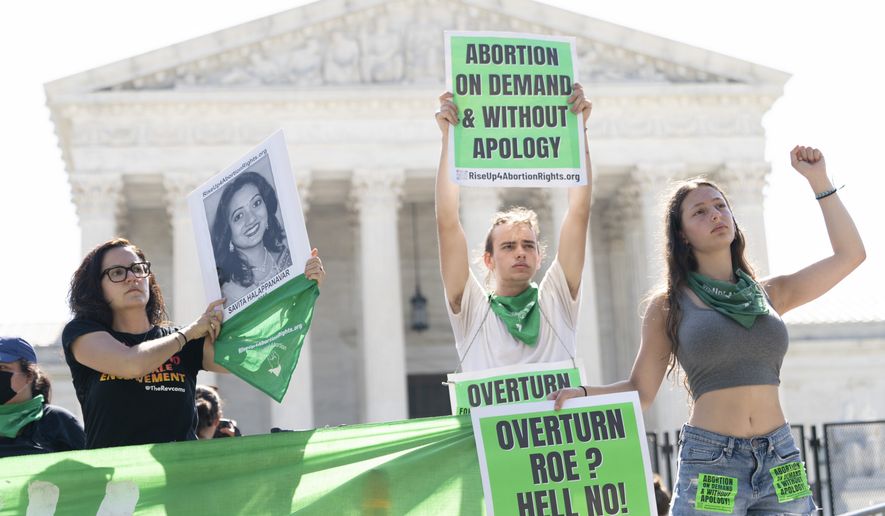Both U.S. abortion rates and numbers are on the rise after a 30-year decline, a trend that comes ahead of an anticipated Supreme Court ruling on the fate of the 1973 Roe v. Wade decision.
After hitting a post-Roe low in 2017, abortions reached 930,160 in 2020 for a three-year increase of 8%, according to figures released Wednesday by the pro-choice Guttmacher Institute in its latest Abortion Provider Census.
From 2017-20, the abortion rate rose by 7%, from 13.5 abortions per 1,000 girls and women ages 15-44 to 14.4 abortions per 1,000 women. In 2020, about 1 in 5 pregnancies were aborted.
The Guttmacher analysis said the upswing underscores “the need for abortion care in the United States is growing jut as the US Supreme Court appears likely to overturn or gut Roe v. Wade.”
Kristan Hawkins, president of Students for Life of America, called the increase “horrific.”
“When the Planned Parenthood-founded Guttmacher Institute says we ’need’ more abortion, they really mean that THEY need it,” said Ms. Hawkins in a statement. “It’s going to take a lot of job retraining for that billion-dollar enterprise comprised of bullies and profiteers to learn how to do something life-affirming in a Post-Roe America.”
The pro-life group Live Action said the reversal of the longstanding trend “means that today, approximately 2,548 babies are killed every day in the U.S. by abortion.”
BREAKING: The pro-abortion Guttmacher Institute just announced that 930,160 abortions were committed nationally in 2020—an increase of 67,840 over the 862,320 abortions reported in 2017.
— Lila Rose (@LilaGraceRose) June 15, 2022
930,160 children killed by abortion.
The loss of each of these children is incalculable.
Despite the uptick, abortions are still well below their post-Roe high in the 1980s, when there were more than 1.5 million abortions per year.
From 1980 to 2020, the U.S. abortion rate fell by 50%. Since 2011, abortions have dropped by 12%, according to Live Action.
“The latest abortion data did not update on the reasons why women choose abortion, nor did it break down abortions by race, as has been done in past reports,” said Live Action. “It also did not expound upon the previously reported increases of abortion pill sales.”
Abortion pills were responsible for about 54% of all pregnancy terminations in 2020, according to Guttmacher data released in February.
Guttmacher and others said possible explanations include expanded Medicaid coverage in some states; disrupted healthcare during the 2020 pandemic, and the Trump administration’s ban on Title X funding for abortions, which prompted Planned Parenthood to refuse program funds.
“This meant that many people in some states lost access to low- or no-cost contraceptive care,” said the Guttmacher analysis. “In turn, this may have resulted in more unintended pregnancies and greater need for abortion care.”
Twenty-five states enacted 168 restrictions on abortion from 2017-20, but Guttmacher pointed out many of these were blocked by courts and have yet to take effect, meaning that their impact was likely minimal.
“In addition, many of these new restrictions were enacted in states where clinics had already been operating in hostile environments, so their practical effect likely was reduced,” Guttmacher said.
The Supreme Court is expected to issue a ruling in the next few weeks on Dobbs v. Jackson Women’s Health, which centers on whether state bans on pre-viability abortions are constitutional.
A draft opinion leaked in May indicated that the court has a majority to overturn Roe, the landmark 1973 decision that legalized abortion nationwide.
“America has some of the highest abortion rates and most extreme pro-abortion laws in the world,” said Live Action President Lila Rose. “It’s time to change that. Abortion restrictions save innocent lives and we need them more than ever.”
• Valerie Richardson can be reached at vrichardson@washingtontimes.com.




Please read our comment policy before commenting.